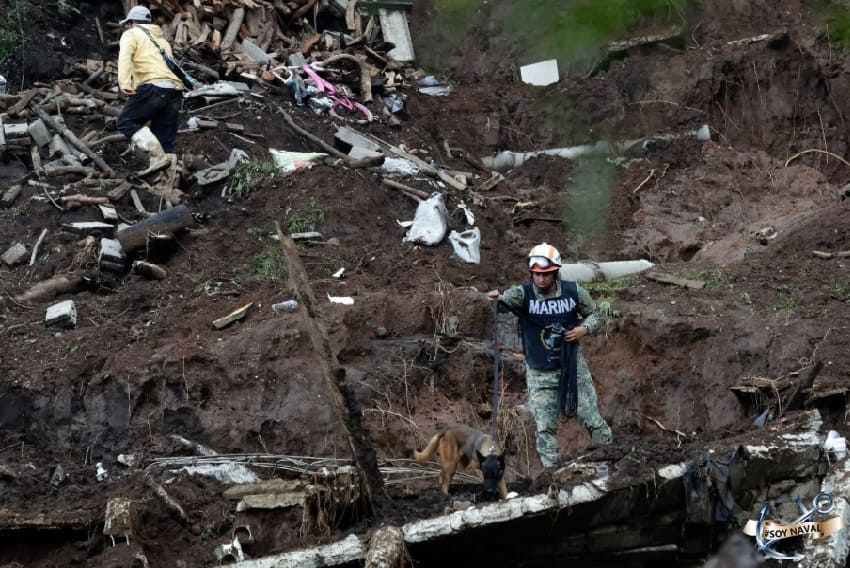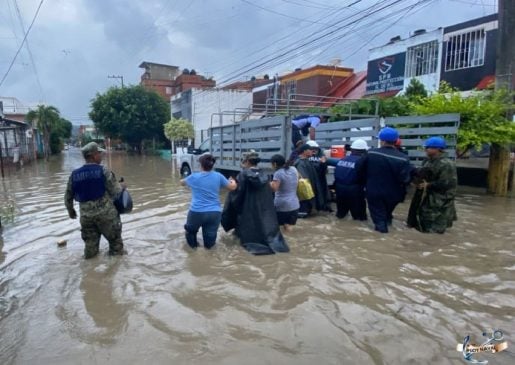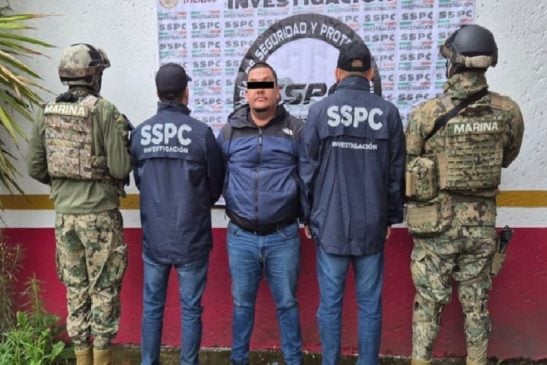Mexico City, Mexico — After a tour of states devastated by two tropical storms, the death toll has climbed to 65. President Claudia Sheinbaum reported 65 dead and 65 unaccounted for with 100,000 homes left in ruins across five states.
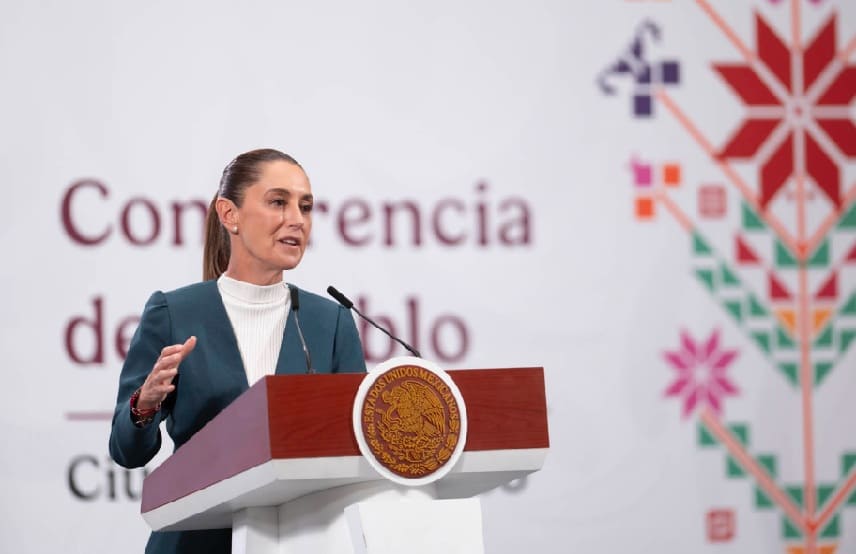
President Sheinbaum toured the affected areas Sunday after more than 500mms of rain fell across parts of Veracruz, Hidalgo, Puebla, San Luis Potosí and Querétaro from two tropical storms.
During a Monday press conference, she explained that the priority right now is opening roads to isolated towns, although in all cases, the Armed Forces airlifts have been established to transport water and food.
“There are some places where roads will be opening today and there are places, mainly in Hidalgo and Veracruz, where it will be a few more days,” she said Monday.
Following the supervisory tour he led Sunday in Puebla and Veracruz, she confirmed that more support will arrive to reinforce the deep cleanup.
“What’s needed is a lot of backfilling, a lot of trucks to take out the garbage, and that’s what’s going to happen today.”
She said the Ministry of Welfare’s census also began Monday, which includes homes, land plots, and small businesses, ensuring that no family will be left behind.
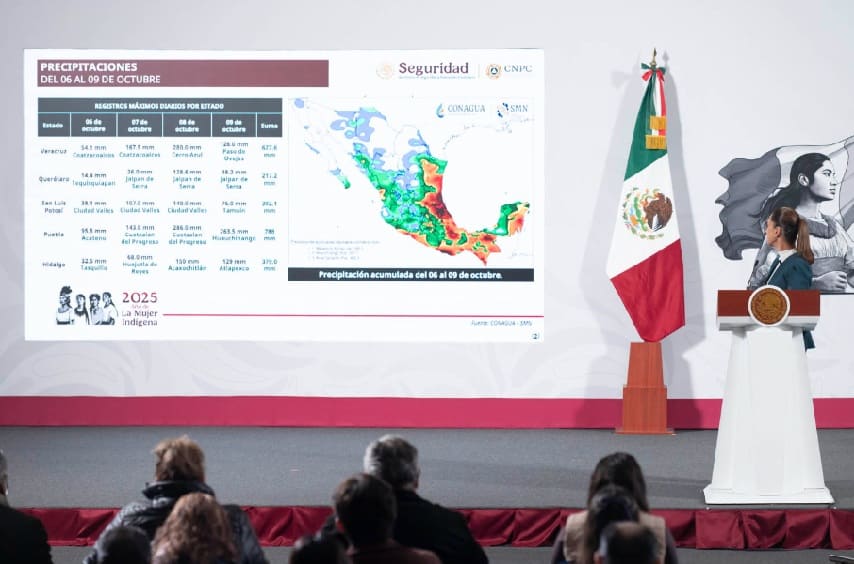
“Following the census, initial support will come, followed by greater support. The Ministry of National Defense has supplies still stored in its strategic reserve that will be distributed once the houses are cleared and all communications are reestablished.”
She mentioned that the flooding of rivers caused the main damage. “There’s no way to build a new home there, so in that case, with Sedatu and Conavi, we’re conducting censuses to provide housing to many people who had their homes on the riverbanks who clearly can’t return to these areas because they’re at risk.”
In the five affected states, the Executive Commission for Victim Assistance (CEAV) and the National Search Commission (CNB) are in contact with families who have reported missing persons.
“Let the people of Mexico know that we will give our all, as we always do, but especially in this. And that we are not sparing any effort, any support. Know that we are there, we will be there, we will not leave anyone helpless.”
She added that aid delivery requires organization and coordination so donations must be made through state governments and military regions.
“The Mexican people are very generous and always want to support. And we, with complete transparency, state where the donations go, how they arrived, and where they are being taken.”
Sheinbaum highlighted the work of the governor of Veracruz, as well as the governors of Hidalgo, Puebla, San Luis Potosí and Querétaro, who, regardless of their political affiliation, have maintained coordination with the federal government from the outset to help the population.
At the end of the morning press conference, the president led a meeting with members of the Ministry of Finance and Public Credit (SHCP) to secure the necessary resources for the affected families.
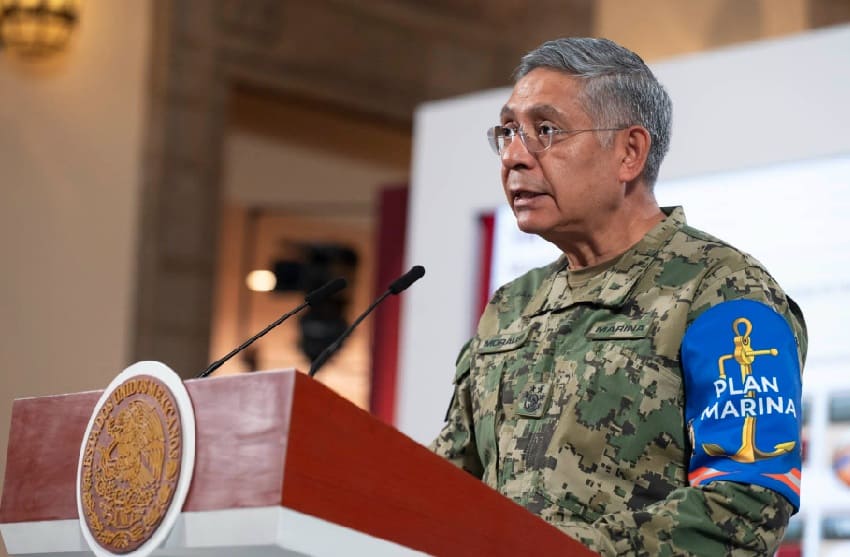
The Secretary of National Defense, Ricardo Trevilla Trejo, explained that the DN-III-E Plan is being implemented in the five states with the deployment of 7,347 members of the Mexican Army and National Guard.
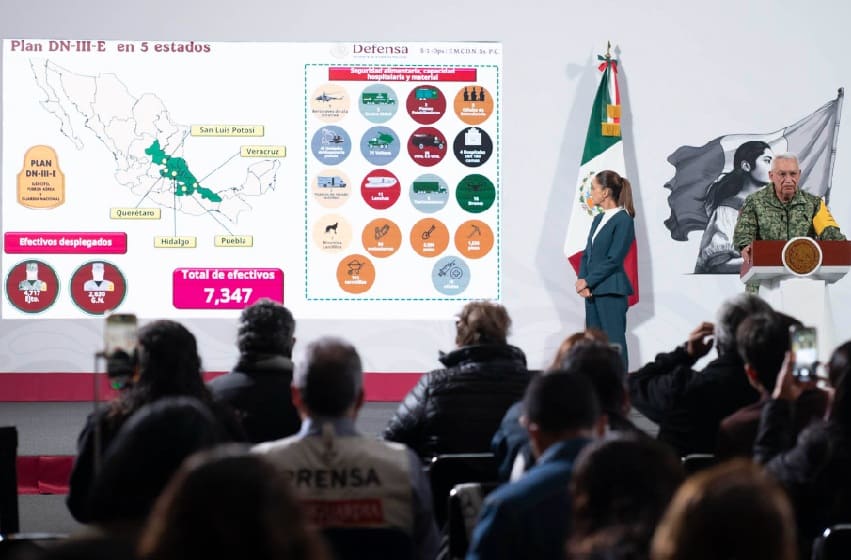
They have seven aircraft, 40 units of heavy machinery, four hospitals with 160 beds, and two water treatment plants, among various equipment such as mobile kitchens, dump trucks, boats, tractor-trailers, drones, canine teams and chainsaws.
They have delivered water and food to 39 isolated communities in Veracruz, Hidalgo, and Puebla. In Poza Rica, the number of personnel deployed will increase from 400 to 1,000, and in Álamo, they will increase from 400 to 500.
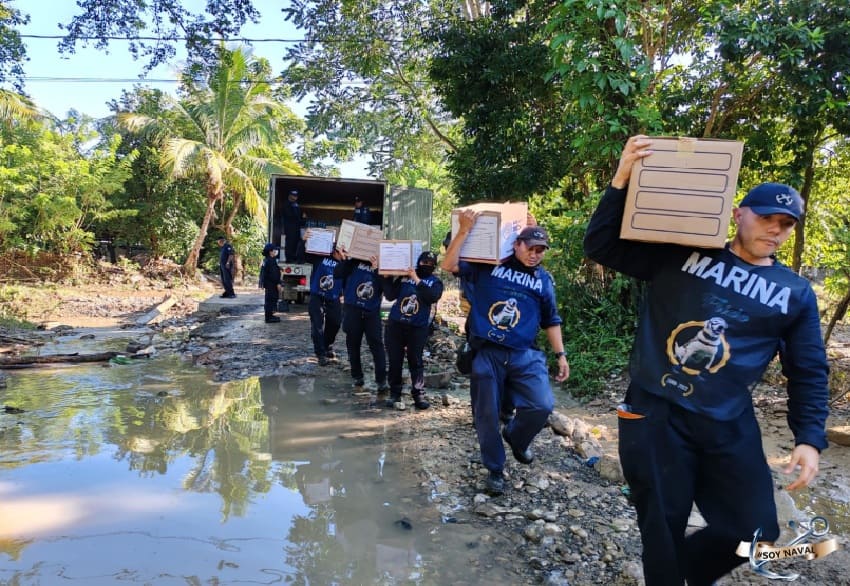
Navy Secretary Raymundo Pedro Morales Ángeles stated that 3,300 troops are on the ground. They have eight aircraft, nine helicopters, three water treatment plants, two ships, and 19 boats, among other resources. So far, they have delivered 4,500 boxes of food supplies.
The Secretary of Infrastructure, Communications and Transportation, Jesús Antonio Esteva Medina, reported that 130 road interruptions were resolved out of a total of 132, involving 1,061 kilometers.
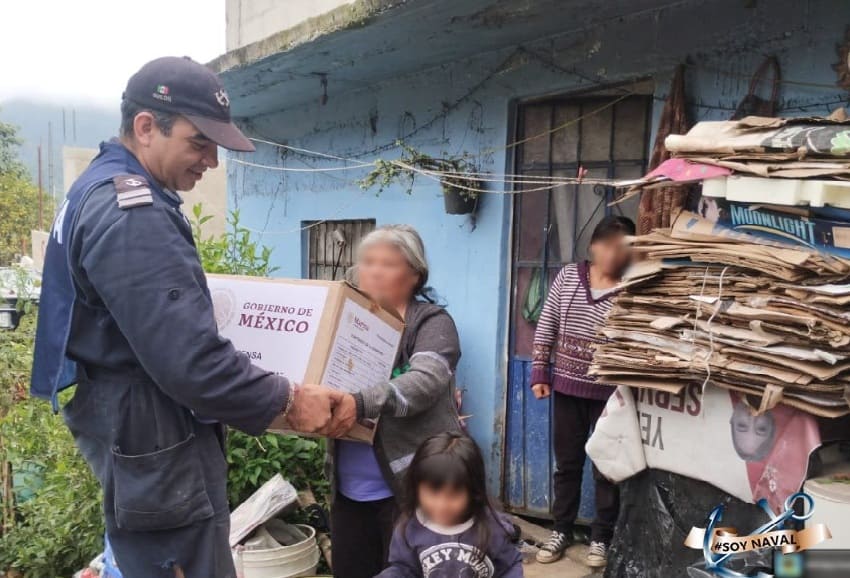
To date, they have removed 126,485 cubic meters of material from landslides and collapses, with the support of 478 workers and 276 machines.
The agency operates in 75 municipalities and is servicing 32 affected vehicular bridges in the five states.
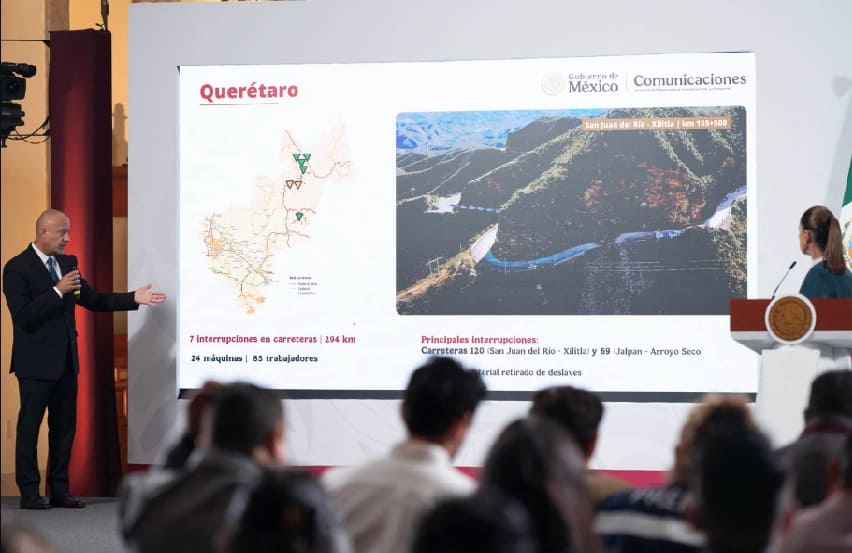
The national coordinator of Civil Protection, Laura Velázquez Alzúa, reported that 40 municipalities in Veracruz were affected and that 29 people died and 18 are missing.
In Hidalgo, 28 municipalities were affected, 21 people lost their lives and 43 are missing.
In Puebla, 23 municipalities are affected, 13 people have died and four are missing.
In San Luis Potosí, 12 municipalities were affected. This state has not recorded any deaths or missing persons.
In Querétaro, eight municipalities were affected. One person died and no one is reported missing.
The director general of the Federal Electricity Commission (CFE) , Emilia Calleja Alor, announced that 262,847 users were affected by the power supply. So far, 84 percent of the service has been restored.
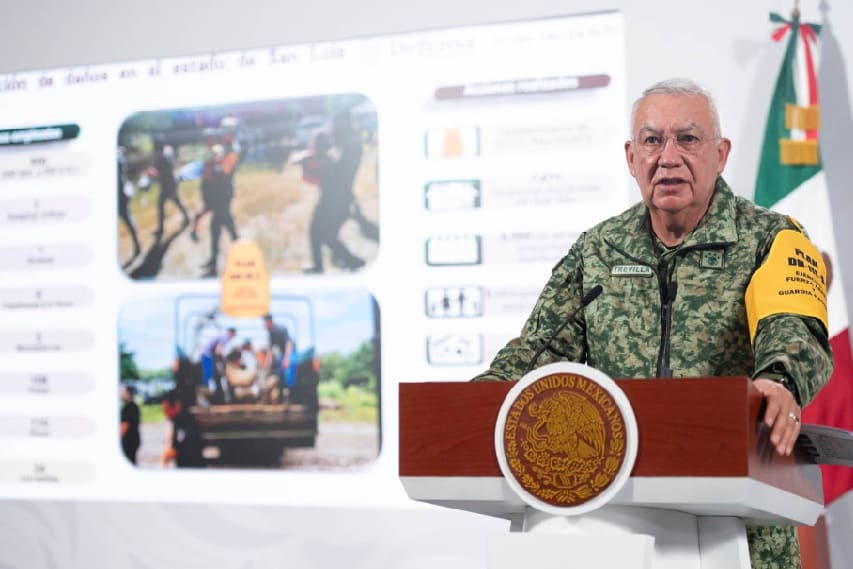
The public telecommunications network was damaged in 58 municipalities, 44 base stations and 152 free internet access points have already been restored, benefiting 595,917 residents.
To serve the population, they have 380 workers, 78 cranes, 90 vehicles, 22 emergency power plants, five drones, and four helicopters. Power is available. Isolated areas will be served once the roads are open.
Between October 6 to 9, tropical storms Raymond and Priscilla dumped heavy rains on Veracruz (540 millimeters), Puebla (487 mm), San Luis Potosí (298 mm), Hidalgo (245 mm) and Querétaro (232 mm). To date, 65 have been reported killed with another 65 unaccounted for, up from the initial count of 48 dead.
